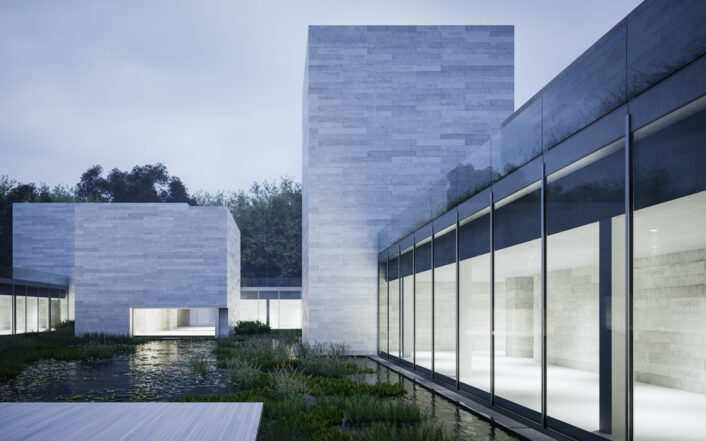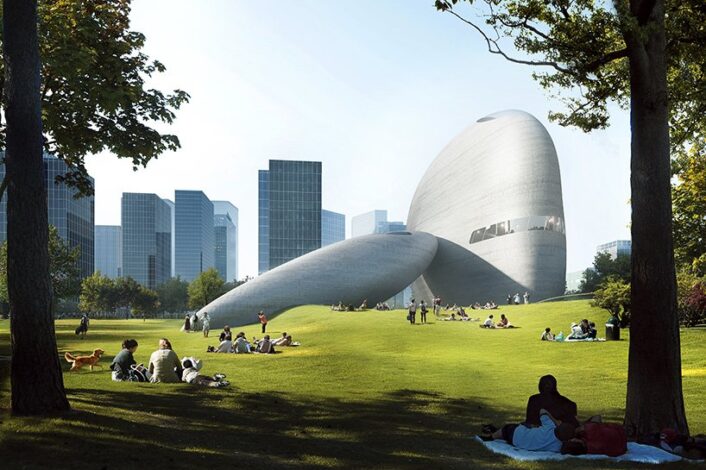Architecture
In Houston, Museum of Fine Arts gets new building!
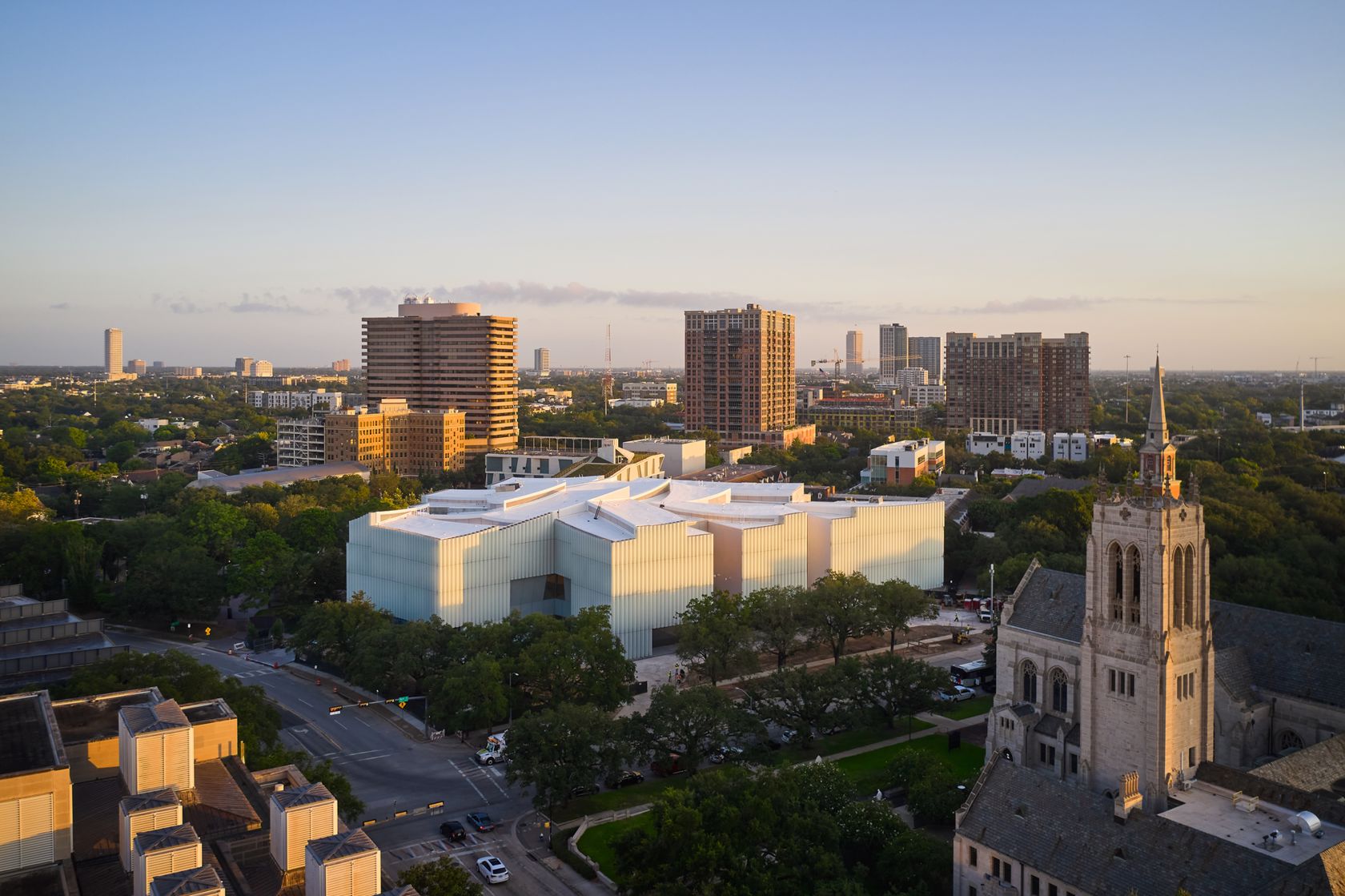
The project began in 2012.
Image courtesy of: Museum of Fine Arts Houston, photographed by: Peter Molick
Last year, in the midst of a global pandemic, The Museum of Fine Arts opened in Houston. The museum joins a handful of other art museums in which the exterior is just as impressive as what’s inside. The museum’s director, Gary Tinterow said (courtesy of an interview with Justin Goldman), “I think it joins a handful of museums around the world that have iconic spaces, such as the Guggenheim New York, the Guggenheim Bilbao, and the Louvre Abu Dhabi.”
This long-anticipated arena for modern art comes after nearly two decades of planning, fund-raising, and construction. The 237,000-square-foot Nancy and Rich Kinder Building is named after the local couple who donated $75 million for the cumulation of this ambitious project.
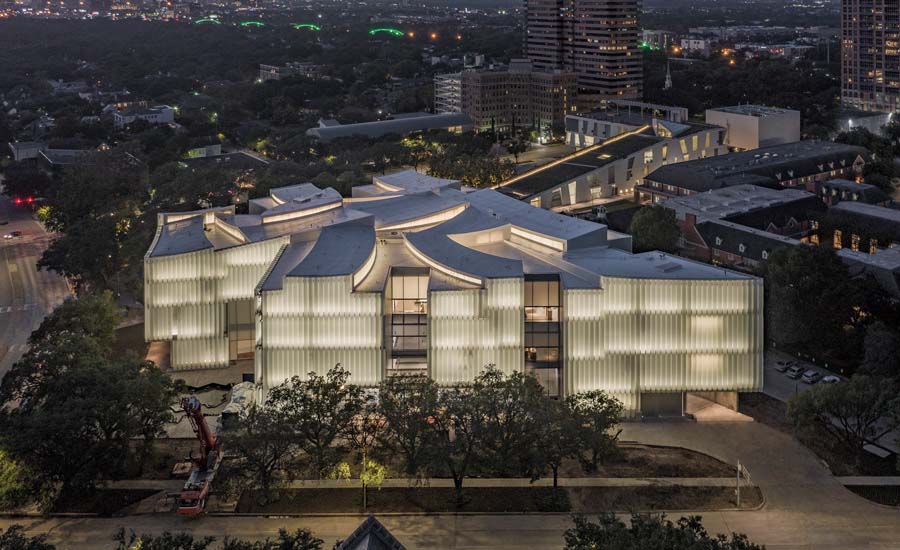
The building is covered by a complex clerestory roof that allows diffused daylight to shine throughout the interior.
Image courtesy of: Architectural Record, photographed by: Richard Barnes
The glass-clad, concrete building was designed by Steven Holl Architects. It features a three-level atrium and naturally-lit gallery spaces. Some say that during nighttime hours, the building appears like an “alien spacecraft about to take off.” This was the desired effect of the New York-based Steven Holl; it was his idea to wrap the building in a vertical arrangement of translucent glass cylinders. These tubelike structures are nearly one foot in diameter… they are equally functional and decorative. During the day, these pieces conserve energy by trapping heat and during nighttime hours, they light up and emit a beautiful glow. Holl says that the Texas sky served as his inspiration for the building’s design.
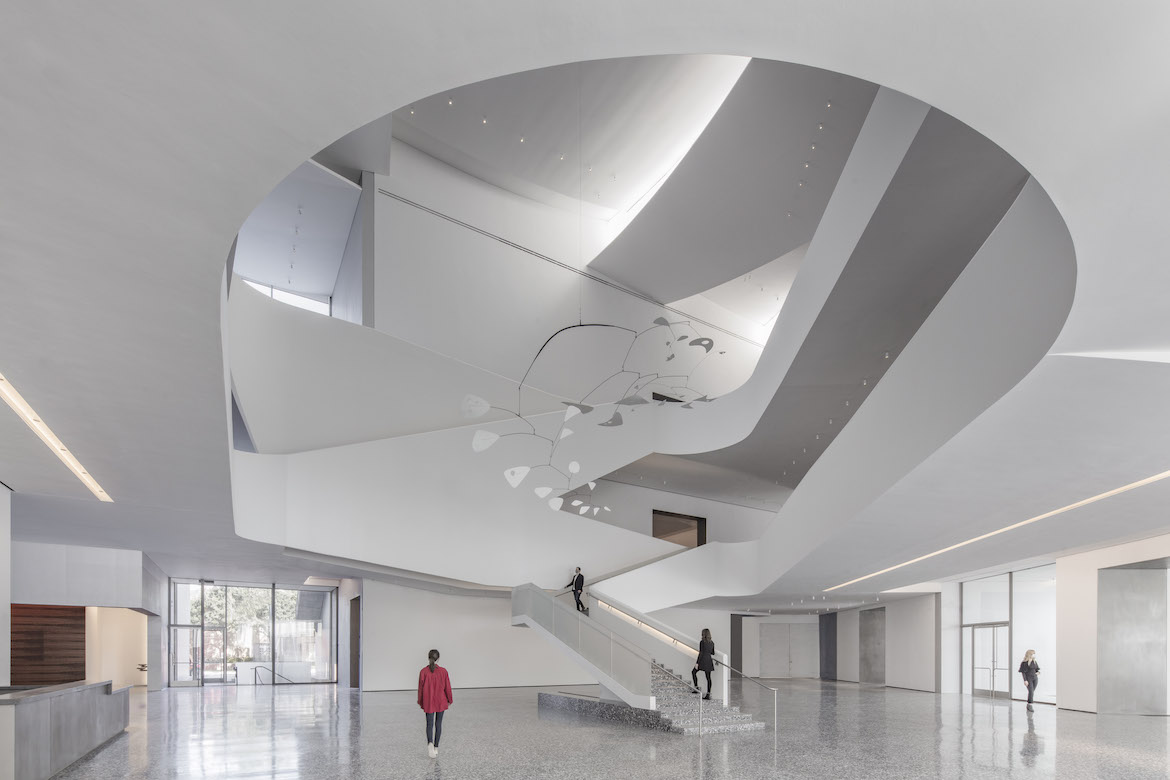
The brightly-lit atrium houses an Alexander Calder mobile, “International Mobile,” 1949. This installation is suspended from the “cloud panels of the clerestory roof.”
Image courtesy of: Architectural Record, photographed by: Richard Barnes
This building is the final piece of the puzzle in this half-billion dollar expansion plan. Also included in the 14-acre Susan and Faye S. Sarofim Campus is a new building for the Glassell School of Art, a new conservation lab, two underground parking garages, and a pedestrian tunnel that connects the Kinder Building to the Mies van den Rote-designed Caroline Wiess Law Building which houses the museum’s vast collection of African, Asian, Islamic, and pre-Columbian art.
The Kinder Building was designed to both stand out and fall into place with the surrounding buildings that are a part of the campus. Tinterow says, “It’s different but compatible. It bows to the building across the street, and acknowledges it in the sweeping curve on Bissonnet Street.”
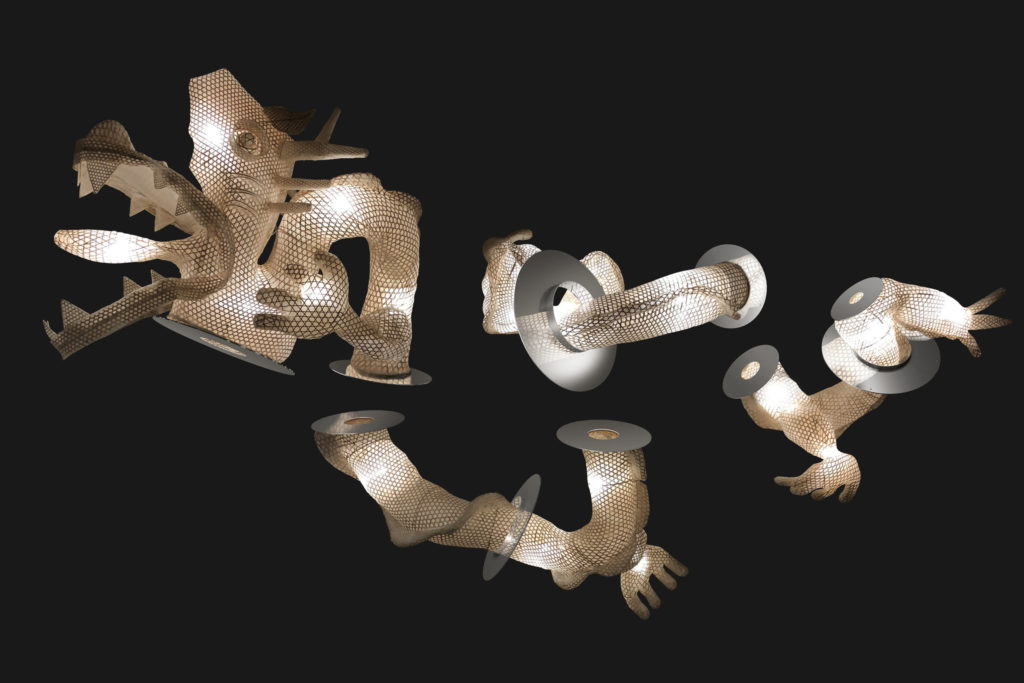
Ai Weiwei’s “Dragon Reflection” is one of the site-specific installations at MFAH.
Image courtesy of: ArtNews
Perhaps just as important as the architectural statement of the Kinder Building is the 102,366-square-foot exhibition space that was added. Perviously, only two dozen works of art were on display, now thousands of works will be on view. Some highlights will include the museum’s collections of early 20th-century American Abstract Modernism, postwar Latin American Modernism, and photography dating back to the mid 19th-century.
Some recent and exciting acquisitions such as Kara Walker’s “Slaughter of the Innocents” and Yayoi Kusama’s “Aftermath of Obliteration of Eternity” will now be displayed. The additional exhibition space also allows for eight site-specific works to have their own spaces.
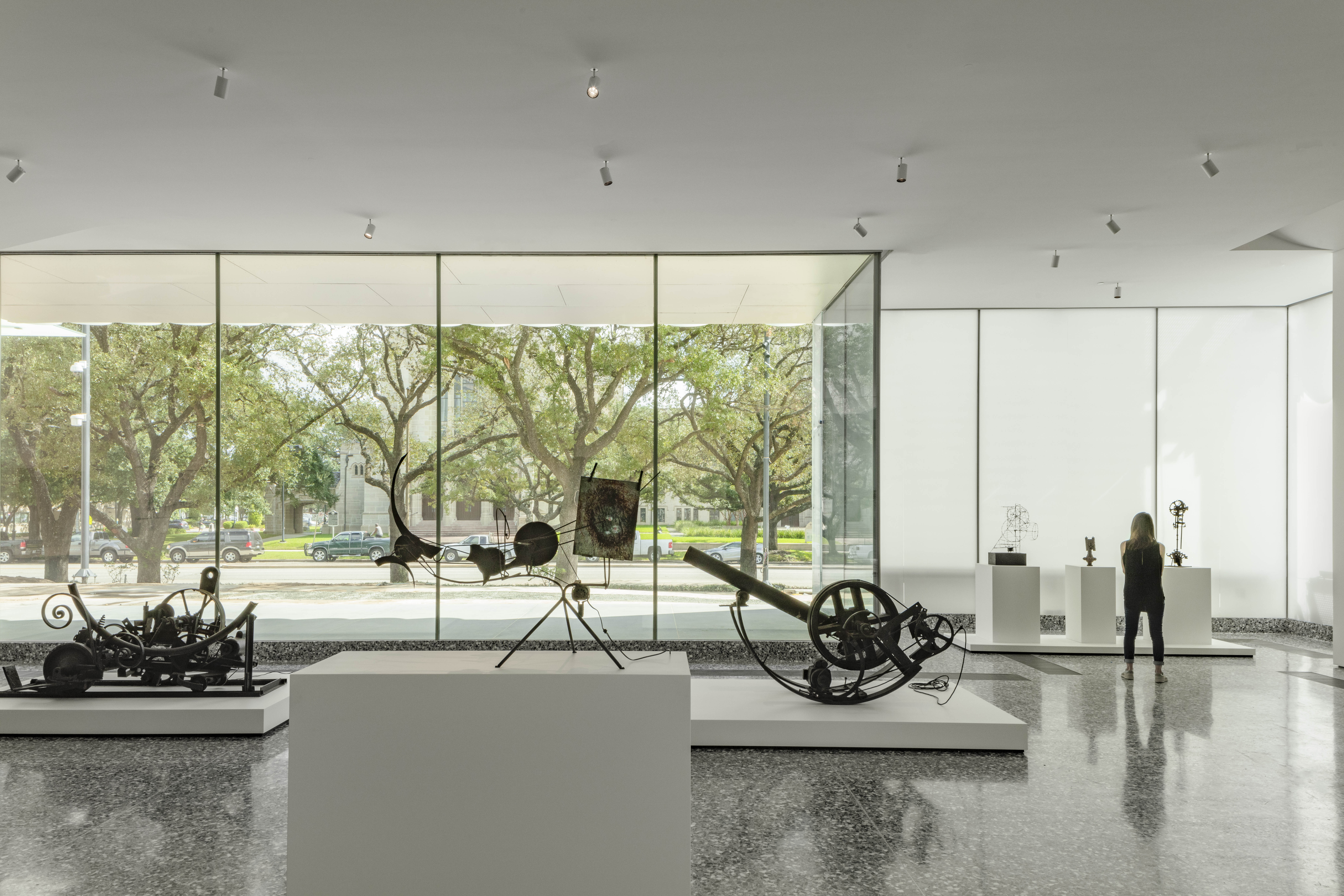
The windows on the street level galleries at the MFAH’s Kinder Building will be lit at night so that the pedestrians walking on Main Street can peek inside.
Image courtesy of: Paper City Magazine, photographed by: Richard Barnes
The five rectangular courtyard pools that outline the building’s perimeter point to a sense of “openness.” Once the pandemic ends, the ground level will remain open past museum hours to allow visitors to dine at the restaurant or enjoying select entertainment at the 200-seat auditorium.
The museum’s opening was slightly delayed due to material shortages, two hurricane preparations, and Covid-19. Now that the new building is open, no one can deny that this will be a fabulous asset for Houston, and of course for art and architecture lovers throughout.
